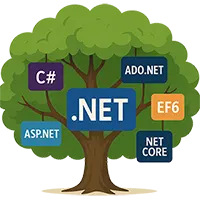Learn Private Access Specifiers C# with Examples and Easy Explanations
Introduction
Okay, picture this… You’ve got a secret diary 📖. It’s full of personal stuff, and you don’t want anyone peeking at it. So, you lock it up! 🔒 That’s exactly what C# Private Access Specifiers do for your code.
They keep certain things (like variables and methods) private. No one from the outside can mess with them. Cool, right? 😎 Let’s see how it works!
What You Are Going to Learn in This Lesson
✅ What C# Private Access Specifiers are.
✅ Why you should use them.
✅ Easy syntax with a simple code demo.
✅ A real-world example you can totally relate to.
✅ Full code with output (because seeing is believing!).
✅ And a friendly wrap-up with what’s next.
Let’s make this fun and easy. Ready? Let’s go! 🚀
What are Private Access Specifiers in C#?
In simple words:
👉 C# Private Access Specifiers hide things inside a class.
👉 Only that class can use them.
👉 Outsiders? Nope, they can’t touch it! 🙅
You use the private keyword to do this. It’s like saying, “Hey, this is my stuff. Hands off!” 😄
Syntax
private dataType variableName;
private returnType MethodName()
{
// Code inside
}
See? Not scary at all! 🙌
Let’s See a Simple Example
using System;
class Person
{
private string name; // Private variable
public void SetName(string newName)
{
name = newName; // Allowed inside the class
}
public void ShowName()
{
Console.WriteLine("Name: " + name); // Works just fine here
}
}
class Program
{
static void Main()
{
Person person = new Person();
person.SetName("Steven"); // We set the name using a public method
person.ShowName(); // Show the name
// person.name = "John"; // 🚫 Nope! This causes an error. It's private!
}
}
Output:
Name: Steven
What’s Going On Here? 🤔
Alright, let’s break it down:
- We made a
Personclass with a private variable calledname. No one outside can touch it. - But hey, how do we set the name? Easy! We created a public method
SetNameto handle that. - Wanna see the name? We got you covered with
ShowName. - In
Main, we used those public methods. Worked like a charm! ✨ - Tried to access
namedirectly? C# said, “No way!” 🙅♂️ Private means private, my friend.
Real-World Example: Bank Account 🏦
Imagine you have a bank account. You wouldn’t let just anyone change your balance, right? That’d be crazy! 😱 Let’s use Private Access Specifiers C# to protect it:
using System;
class BankAccount
{
private double balance; // Private variable
public void Deposit(double amount)
{
if (amount > 0)
{
balance += amount;
Console.WriteLine($"Deposited: ${amount}");
}
else
{
Console.WriteLine("Deposit must be positive!");
}
}
public void ShowBalance()
{
Console.WriteLine($"Current Balance: ${balance}");
}
}
class Program
{
static void Main()
{
BankAccount account = new BankAccount();
account.Deposit(200); // Money in! 💵
account.ShowBalance(); // Show me the money! 🤑
// account.balance = 1000; // 🚫 Nope, can't touch the private balance!
}
}
Output:
Deposited: $200
Current Balance: $200
Why This Example Rocks 🤩
- Your
balanceis private, just like your actual bank account info. - Only the
Depositmethod can add money safely. ShowBalancetells you how much you’ve got.- Tried to change
balancedirectly? C# blocked it! 🙅 Security for the win! 🏆
Conclusion
So, what did we learn? 🤔 C# Private Access Specifiers keep your data safe. They’re like personal bodyguards 🛡️ for your code. If you don’t want anyone messing with certain parts of your class, make them private. Simple, right?
Use them wisely, and your code will be neat, secure, and happy! 😄
Next what?
Woohoo! 🎉 You just nailed Private Access Specifiers C#! Feeling good? I bet you are! 🙌 Next up, we’ll explore Protected Access Specifiers in C#. It’s like giving special access to close family members. Sounds interesting, huh? Stay tuned, buddy! 😎



